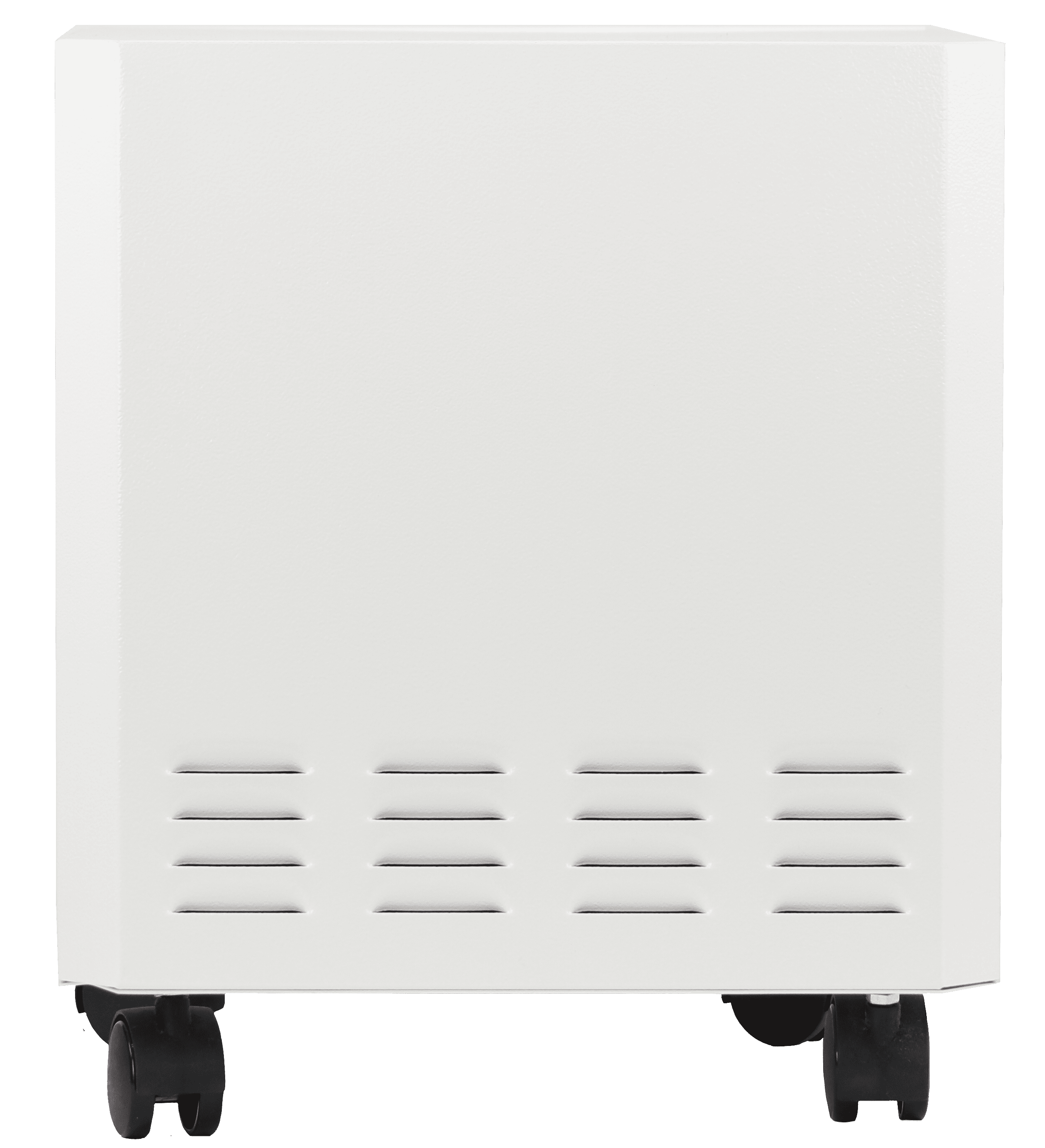Everything to Know About Asthma During Asthma Awareness Month
Did you know that May is National Asthma Awareness Month, a prevalent disease that many people suffer from throughout the world? Asthma is a chronic condition that affects an individual’s airways and will provoke asthmatic symptoms when exposure to an allergen or irritant occurs. Unfortunately, according to the CDC, asthma can affect one in 13 Americans, which averages about 25 million people or even more that suffer from asthma. The designated National Asthma Awareness Month brings those asthma sufferers together, as well as organizations that are dedicated to asthma control and education to increase overall awareness about asthma and ways to improve the lives of all those sufferers of this condition.
Asthma can have a significant impact on an individual’s health and when asthmatic symptoms take place it can create dangerous conditions for someone such as wheezing, difficulty breathing, and a range of other symptoms. With the wide range of asthma types and factors that can elicit this condition, make it hard to control your asthma and trying to minimize having an asthmatic attack. Therefore, it is important to understand what asthma is, the different types of asthma, why people get asthma, and the best things to do to try to help reduce asthma in those individuals who are asthmatic.
In this article we are going to learn more about what asthma is and how it effects individuals, particularly in a home, as well as discuss what can be done in your home to help mitigate your asthma such as using an effective air purification device.
What’s Asthma
If you have never suffered from asthma, than you may be unaware of exactly what this condition is and how it effects the human body. The National Heart, Lung, and Blood Institute (NIH) have classified asthma as a chronic, long-term condition that intermittently inflames and narrows the airways in the lungs of an individual. When this inflammation takes place, it will make a person’s airways swell up which will result in difficulty breathing, chest tightness, wheezing, and even coughing – all of which are identified as asthmatic symptoms. These asthma symptoms, however, can range in severity from mild to severe and some symptoms may be present while others may not be, depending on the individual and what they have been exposed to in the environment.
When asthma symptoms become worse it will result in what is best known as an asthma attack in the body. During an asthma attack, also known as an asthma exacerbation, the airways will become swollen and inflamed and this will cause the muscles around the airways to start contracting allowing the airways to produce extra mucous. When this extra mucous is created it will cause the breathing tubes to narrow and lead to difficulty breathing and other asthmatic symptoms that will produce an asthma attack. Three of the most common signs that you or an individual is undergoing an asthma attack, according to Mayo Clinic will include;
- Severe shortness of breath, chest tightness or pain, and coughing or wheezing;
- Low peak expiratory flow (PEF) readings, if you use a peak flow meter;
- And Symptoms that fail to respond to use of a quick-acting inhaler.

How Does Asthma Work
When it comes to the basis of how asthma works in the human body there are several components to this condition, such as inflammation, bronchoconstriction and airway hyperresponsiveness – outlined by the University of Chicago Asthma & COPD Center. Treating and managing asthma will be important and each of these components will need to be isolated and dealt with to help prevent asthmatic symptoms or reactions. Inflammation in asthma will be located in the body in the breathing tubes – which is the part of the body that will be most affected during an asthma attack. As underlying inflammation forms it can cause swollen airways and an excess of mucus which will reduce the size of the airways, as we discussed earlier in this article.
Bronchoconstriction is when the airways of the lungs contain a layer of smooth muscle and the smooth muscle will start to constrict and squeeze the airway as exposure to an allergen occurs in the environment – making the passage of airflow narrow. Certain medication can be used to effectively combat the bronchoconstriction response, allow for the muscles to relax and temporarily stop the muscles from constricting the airway. Lastly, airway hyperresponsiveness is a twitch that takes place in an asthmatic person’s airways. An individual’s airways are very sensitive and can be triggered by exposure to certain substances in the environment.
Different Types of Asthma

Asthma can be very mild in some cases needing little to no medical treatments, or it can be severe and sometimes life-threatening. There are several different types of asthma that asthma sufferers can experience and deal with that will range in severity. Typically, these types of asthma are identified and determined by the frequency and severity of your asthma symptoms. The various types of asthma that an individual can experience can include the following four classifications; mild intermittent asthma, mild persistent asthma, moderate persistent asthma, and severe persistent asthma.
- Mild Intermittent Asthma: As its name states, this form of asthma will include mild symptoms that will only last for up to two days per week or two nights per month. This specific type of asthma will not hinder any of you day to day activities and an example of this asthma is exercise-induced asthma. The symptoms provoked from this asthma type will include wheezing, whistling when breathing, coughing, swollen airways, and development of mucous.
- Mild Persistent Asthma: For those people with mild persistent asthma, the asthma symptoms will be still be mild but occur more frequently – twice per week usually. The symptoms will include all of the same symptoms as mild intermittent asthma but also will include chest tightness. This form of asthma can be treated with a low-dose inhaled corticosteroid medication.
- Moderate Persistent Asthma: A more severe form of asthma, those with moderate persistent asthma will usually have symptoms once each day or most says. The symptoms of this asthma will be the same as mild persistent asthma and it will be best treated with a higher dose inhaled corticosteroid.
- Severe Persistent Asthma: The most aggressive and severe form of asthma, severe persistent asthma will have an individual experiencing symptom several times during the day. Unfortunately, this asthma type will not respond well to medication even when taken regularly. Often times, individuals who have severe persistent asthma will likely have started with another form of asthma and over time persisted into severe asthma.
Why Do People Get Asthma
When it comes to predicting or preparing for asthma, it can be difficult to plan for, as this condition can develop in young children unexpectedly and stay with them their entire lives in some cases. For many people asthma will not appear until they are exposed to a trigger such as smoke, pollen, or other allergen triggers in the environment. Additionally, other people may experience asthma from chemicals that can cause an asthma attack – which will lead to the tightening of a person’s airways which will leave them having difficulty breathing.
Depending of the allergen, different allergens and irritants in the environment can act as triggers for different people that are exposed. However, when it comes to the most common asthma triggers this will include outdoor allergens (pollen from grass, trees, and weeds), indoor allergens (pet dander, dust mites, cockroaches and mold), irritants in the air (smoke, chemical fumes, and strong odors), exercise, weather conditions (cold air or extremely dry weather), certain drugs, and even stress. Thus, it is important to quickly learn and identify what triggers your asthma so you can try to avoid it in your home and other indoor environments.

Does Asthma Go Away
Many asthmatic people may wonder throughout their life if there asthma will go away overtime, and according to Harvard Medical School this may be a possibility. Harvard explains that asthma can usually go away, but more commonly in those who start to experience asthma in childhood than those who start experiencing asthma in their adulthood. Surprising enough if your asthma symptoms go away, it may be that the asthma was never there in the first place. As we have explained throughout this article, asthma can be very hard to diagnose and in some cases a person may be misdiagnosed – if this happens it can explain the asthma vanishing.
Generally, when it comes to identifying whether or not you have asthma the three most important symptoms to help alert an individual of asthma will be wheezing, coughing, and shortness of breath. Although these are the main symptoms, it does not mean that all three of these symptoms need to be present to have asthma. If you find that you are suffering from asthma, the best thing you can do to help reduce asthma symptoms over time would be to use resourceful solutions that will help minimize substance and irritant exposure in your environments, especially your indoor environment.
Things to Help with Asthma

The process of trying to make you home and other personal indoor environments an asthma-free zone can be more difficult than you may think. Allergens and irritants can be present in almost every environment and often times it will be difficult to determine what these allergens are and how to find them inside your home. One of the most used solutions to asthma is the use of medication such as inhalers and other drugs that will help to reduce asthmatic symptoms from occurring in the body. Other than the use of drugs there have been other claimed solutions that will help to remediate asthmatic symptoms in an individual such as cutting spices, sitting in a steam room, eat healthy, and even stay active.
However, when you are in your indoor environment the air quality and the removal of allergens and irritants will be a critical process in mitigating and helping asthma sufferers. Many asthma sufferers are turning to air purification device to integrate into their homes to help reduce asthma symptoms that they may experience in their home. Do these air purifiers work to help asthma sufferers or is there a better solution to use in your home?
Do Air Purifiers Help with Asthma?
Do air purifiers help with asthma? Our homes are exposed to many contaminants on a daily basis and no matter how careful we are it is nearly impossible to fully prevent some of the items in our external environment from entering into our homes. The key is not to be too concerned about living in a proverbial bubble but rather focus on first removing any items in your home that may be compromising your indoor air and secondly having a preventive measure in place such as the EnviroKlenz air purifier in the event your indoor air is compromised. Air purifiers containing HEPA filter are also considered the ideal whole house air purifier for those individuals looking to prevent inhaling harmful microorganisms and beyond HEPA filtration, someone with Asthma should be equally concerned on the mitigation of chemical triggers and VOCs from their air purifier as well.
The EnviroKlenz Mobile Air System was designed to address the two problem areas that we covered above which are particulates and chemical odors, making it one of the best air cleaners for allergies available. The EnviroKlenz mobile utilizes a patented metal oxide technology that is proven to be highly efficient “destructive adsorbents” for chemicals as well as incorporating a medical grade HEPA filter that can trap dust and dander particles up to 0.3 microns. The unit is a portable, room-sized air filtrations system that utilizes advanced chemical neutralization technology along with HEPA filtration to address both chemical and particulate pollutants. It is small and quiet but packs a punch for addressing the various types of pollutants found in indoor spaces. As the air is circulated it passes through two different stages of filtration: one to neutralize chemicals, and a second to focus on the particulates. This combination makes the EnviroKlenz Mobile Air System the choice for restoring the indoor air quality in your home quickly and effectively.

Article Sources:
- Centers for Disease Control and Prevention (CDC): Asthma – World Asthma Day (link)
- National Heart, Lung, and Blood Institute (NIH): Asthma (link)
- Mayo Clinic: Asthma Attack (link)
- The University of Chicago Asthma & COPD Center: How Asthma Works (link)
- Healthline: Asthma Classification (link)
- Harvard Health Publishing – Harvard Medical School: By the Way, Doctor: Does Asthma Go Away? (link)

Mobile Air System

✓ Patented earth mineral technology works to attack VOCs and break them down on a compound level
✓ No chemicals or masking agents
✓ Will not release any chemicals back into your environment
✓ Safer and faster at removing VOC’s than traditional carbon filters and PECO air purifiers
EnviroKlenz® Medical Disclaimer:
“Any information that is provided on this website is not for the use by any commercial or personal entity without expressed written consent of the blog author. The material and statements illustrated within this blog are not intended to diagnose, treat, cure, or prevent any diseases or medical conditions. Nor does the author in any way guarantee or validate the validity, totality, or efficacy of any claims and will therefore not be held responsible for the content of any claims. Always consult your medical physician for any specific medical advice or recommendations.”
Comments
Post a Comment